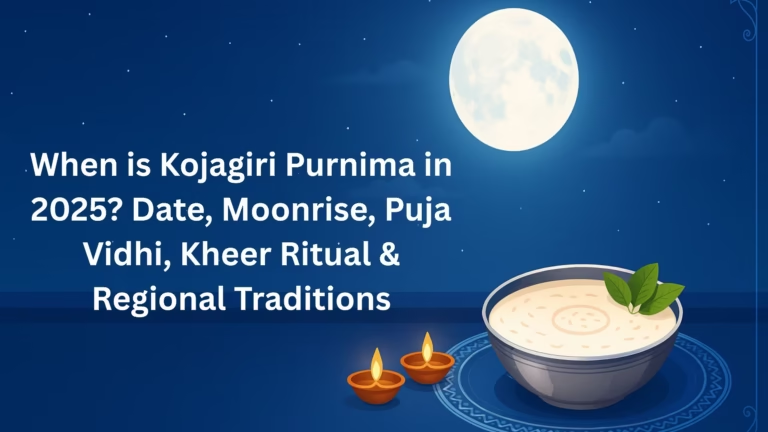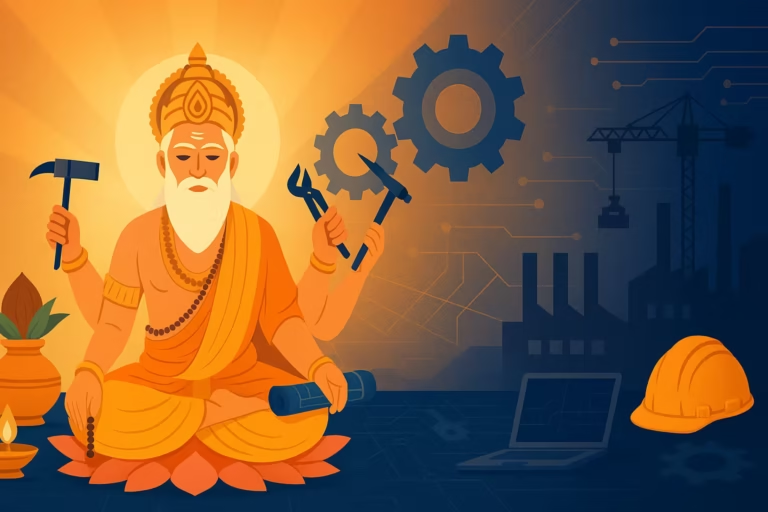Chhath Puja
Indian culture has presented a vibrant tapestry filled with many colorful festivals. Here, we’ll discuss Chhath Puja, a significant festival celebrated predominantly in Bihar, Uttar Pradesh, and parts of southeastern India.

Table of Contents
What is Chhath Puja?
Chhath Puja is a prominent festival in Indian culture dedicated to worshiping and giving thanks to the Sun God. This festival is celebrated with great enthusiasm, especially by people in Bihar, Uttar Pradesh, Jharkhand, and West Bengal.
Chhath Puja takes place on the sixth day (Shashti) of the Hindu months of Chaitra and Kartik, observed twice a year. The festival spans four days, each day carrying a unique significance. These days are known as Kharna, Kharni, Arghya, Sanjha, Sanjhi, and Usha Diwas.
During Chhath Puja, devotees worship the Sun God during sunrise and sunset to express their gratitude. Devotees fast, consuming only food made of salt and rice. Additionally, special offerings are prepared and served as a part of the ritual.
This festival is a community affair, celebrated with the support and collective organization of the entire community. Everyone comes together in preparation and participates in this communal celebration.
Importance of Chhath Puja
Chhath Puja holds immense importance as it is an occasion dedicated to worshipping the Sun God and connecting with the Mother Goddess. It’s viewed as a form of devotion meant to receive blessings for life’s safety, well-being, and prosperity from the Sun God.
Chhath Puja is a grand celebration of humanity that showcases harmony with nature, unity within society, and a shared commitment to traditional values. This festival is a symbol of social unity and prosperity that strengthens bonds among communities.
When and Why is Chhath Puja Celebrated?
Chhath Puja is observed in the Hindu months of Chaitra and Kartik, typically falling in October or November. The primary reason behind celebrating Chhath Puja is to honor the Sun God, seen as the life-giver. The Sun’s rays illuminate, reveal, and help balance our lives. During Chhath Puja, people worship the Sun to seek blessings of protection, prosperity, and well-being.
The festival also promotes a perspective of balance between nature and humanity, as rituals are performed near bodies of water, respecting the natural world. It inspires people to be mindful of environmental protection and preservation.
Chhath Puja fosters unity and brotherhood as people come together to worship, fast, and celebrate communally, strengthening feelings of harmony and collective unity.
How is Chhath Puja Celebrated? | What are the Four Days of Chhath Puja?
Chhath Puja is an essential Hindu festival dedicated to worshiping the Sun God through the offering of arghya (water offerings). It is celebrated with unique traditions, especially in Bihar, Uttar Pradesh, Jharkhand, and West Bengal.
- Nahay-Khay (First Day): On the first day of Chhath Puja, devotees bathe in rivers, ponds, or other clean water sources early in the morning. They return home to observe a strict fast and begin gathering ingredients with reverence.
- Kharna (Second Day): On the second day, fasting women and girls remain without water until sunrise and prepare special offerings in honor of Kharna.
- Sandhya Arghya (Third Day): At sunrise, devotees offer arghya to the Sun God and share the prepared offerings among family members and the community.
- Usha Arghya (Fourth Day): At sunset, the ritual of offering arghya to the Sun Goddess is repeated.
Over these four days, devotees worship the Sun God and honor the natural world, deepening feelings of devotion, prosperity, good fortune, and societal harmony.
Significance of Chhath Puja
Chhath Puja is a major Hindu festival honoring the Sun God, especially revered in Bihar, Jharkhand, Uttar Pradesh, and other regions. The festival holds significance for several reasons:
- Sun God Worship: Chhath Puja is a special opportunity to honor the Sun, recognized as the provider of life, bringing blessings of fortune, prosperity, and harmony in society.
- Devotion and Fasting: Devotees observe fasting from sunrise to sunset, showcasing their dedication and focus on spirituality.
- Environmental Conservation: The festival emphasizes awareness of natural resources and their conservation, as devotees perform rituals involving water bodies, promoting respect for water resources.
- Social Unity and Harmony: Chhath Puja promotes social harmony and collective unity as people come together to celebrate and share the festivities.
- Ancient Culture and Tradition: Chhath Puja is a part of ancient cultural traditions, keeping faith alive and connecting people to their cultural roots.
Chhath Puja is a unique and cherished traditional festival that emphasizes social harmony, good fortune, and environmental respect.
Origins of Chhath Puja
Chhath Puja has its roots in ancient times when traditions and religious practices held significant importance in culture. Traditionally observed on the sixth day (Shashti) of the Hindu month of Kartik, Chhath Puja is a crucial aspect of sun worship and religious culture, celebrated since ancient times.
At the festival’s onset, people offer arghya to the Sun God with specific prayers and intentions, hoping for blessings. This festival, mentioned in various mythological and religious texts, reflects the importance of the Sun God and remains a meaningful part of Indian culture, dedicated to the Sun’s life-giving energy.
Mythology and Folklore
Chhath Puja is steeped in traditional stories and folklore that explain its significance and beliefs. These tales, drawn from religious texts and local traditions, illuminate various aspects of Chhath Puja.
- Glory of the Sun: Mythological tales underscore the Sun’s glory and significance. The tradition of Sun worship in Chhath Puja is meant to express gratitude for his power and life-giving role.
- Karna and Chhath Puja: In one tale, Karna, a great warrior from the Mahabharata, was a devoted follower of the Sun. He observed Chhath Puja and offered arghya to the Sun God, a practice continued in Chhath Puja today.
- King Priyavrat’s Story: Another legend tells of King Priyavrat, who prayed to Goddess Shashti to bless him with children. Due to this devotion, he was granted a child, and Goddess Shashti became a central figure in Chhath Puja rituals.
- Chhath Puja in the Ramayana: Chhath Puja is also mentioned in the Ramayana. Ram and Sita performed Chhath Puja, praying to the Sun for a healthy and prosperous life.
These mythological stories highlight the significance of the Sun God and Chhath Puja, helping people understand its importance.
Sun Worship in Indian Culture
In Indian society, there is an ancient tradition of Sun worship, which is central to Hinduism. The Sun is considered a significant deity, the sustainer of life, and a source of power and energy essential to existence.
The tradition of Sun worship began in the Vedic era, where the Sun was highly revered and praised in the Rigveda, Yajurveda, Samaveda, and Atharvaveda.
This practice continues through Chhath Puja, where devotees offer prayers to the Sun God using ancient rituals, worshipping at sunrise and sunset. Primarily celebrated in Bihar, Jharkhand, Uttar Pradesh, and Nepal, Chhath Puja includes special prayers and arghya offerings to the Sun.
In Indian culture, Sun worship is considered extremely important, believed to bestow life energy on humanity through divine grace.
if you want to read this article in Hindi Click here



